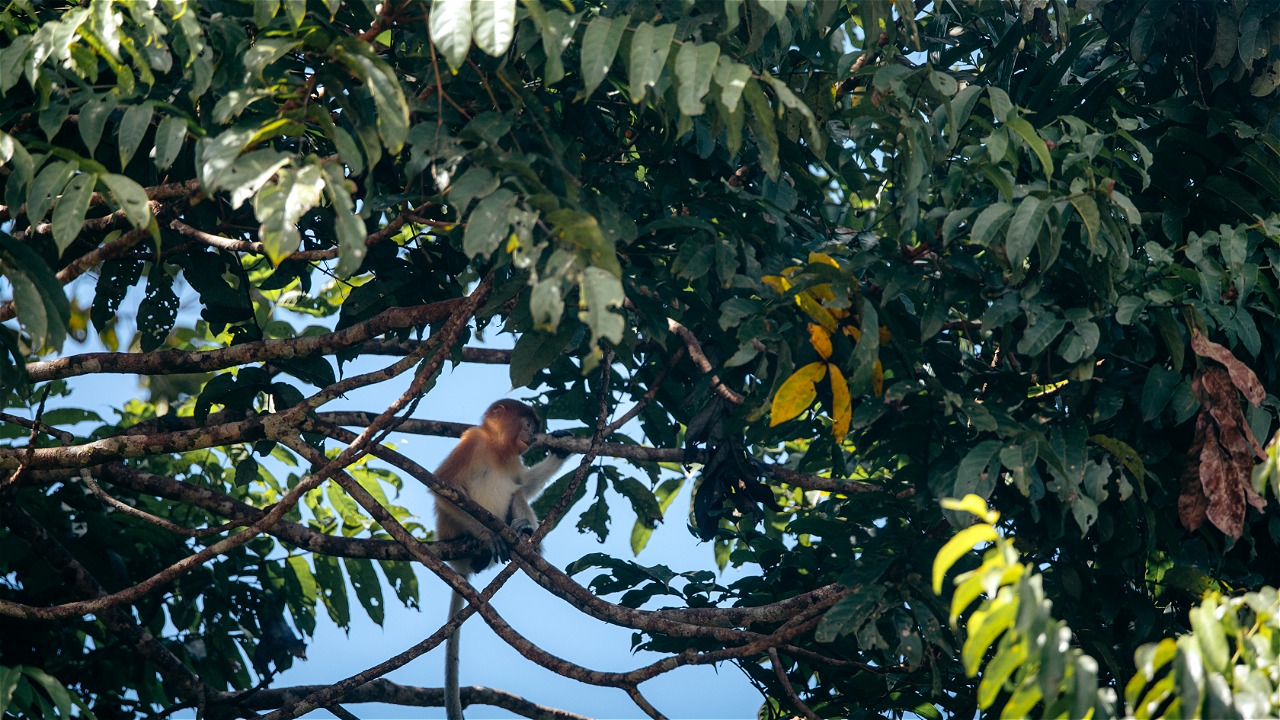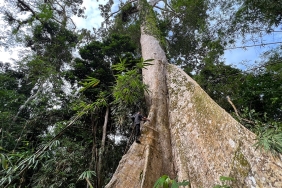INVITING MILLENNIALS TO SAVE THE FATE OF BORNEO'S SIGNATURE BIG-NOSED PRIMATES
By: Nur Arinta
For those who have visited Dufan or Dunia Fantasi, you must know this animal, Proboscis Monkey (Nasalis larvatus), yes! This big-nosed monkey is the logo of Dufan. Proboscis monkeys are endemic to Borneo and have an important role in wetland and mangrove forest ecosystems, namely as a regulator of forest quality control to achieve the expected aspects.
Unfortunately, its fate is now increasingly threatened due to habitat degradation and hunting. The threats that occur have an impact on the Proboscis Monkey population. Its status according to the IUCN (international conservation organization) is endangered (EN). In fact, this monkey, which has a distinctive nose, is protected by Law No.5 of 1990 concerning Conservation of Living Natural Resources and Ecosystems and is also an Appendix I category species in CITES, meaning that it cannot be traded.
The character of this large-nosed monkey, which is difficult to adapt to change, greatly affects its population size. This can be seen from the results of research that shows that there is a downward trend in the number of proboscis monkey populations due to human activities. In fact, proboscis monkeys are indicators of a healthy ecosystem and their existence can support human welfare. The fate of the Proboscis Monkey currently requires special attention.
Tuesday, December 5, 2017, the fate of the Proboscis Monkey was "dissected" in the book review event "Proboscis Monkey: The Struggle Against Extinction". This activity was held at the Library of the Ministry of Education and Culture, Jakarta. by stakeholders from various circles.
There were eight speakers who discussed the fate of proboscis monkey conservation. They are Prof. Hadi Alikodra who is a Professor of Forestry IPB, Ir. Wiratno M.Sc Director General of KSDAE, Dr. Sofian Iskandar from the Center for Forestry Research and Development KLHK, Chairul Saleh Species Specialist WWF-Indonesia, Fairus Mulia from PT Kandelia Alam, and Fitrian Ardiansyah from the Green Trade Initiative (IDH). Not only that, two public figures who are also honorary supporters of WWF-Indonesia, Nugie and Davina Veronica also shared stories about their experiences when visiting the Proboscis Monkey habitat and expressed their enthusiasm to support the conservation of this big-nosed monkey and its habitat.
"The world community also enjoys the integrity of the Proboscis Monkey habitat, because the mangrove forest which is the habitat of the Proboscis Monkey is a fairly high carbon sink," explained Prof. Hadi Alikodra. Based on data from the Ministry of Environment and Forestry, Indonesia has ± 3,489,140.68 hectares of mangrove areas. This area stores 3.24 billion metric tons of carbon, or equal to one-third of the world's carbon storage.
The depletion of proboscis monkey habitat is happening very quickly. In fact, the area has a high economic value for the people who live around it. So far, many people have converted riparian forests, which are habitat for proboscis monkeys, into residential areas and fields. This has an impact on the Proboscis Monkey population which continues to decline and the distribution between Proboscis Monkey colonies is becoming increasingly distant.
In addition, the stigma that develops in the community that the Proboscis Monkey is a pest also makes many people hunt this animal. "Many people hunt proboscis monkeys for consumption. One hunter can get at least five proboscis monkeys in one day," said Abdurrahman, a wildlife observer in West Kalimantan. You can imagine how big a threat the proboscis monkeys face to survive.
Sofian Iskandar, a proboscis monkey researcher, said habitat degradation and its impact on hunting and land conversion have reduced the proboscis monkey population by 90 percent in the last 20 years. While in mangrove forest areas, there is a decrease in habitat by 3.1 percent every year. In addition, there has been a process of adaptation of proboscis monkeys that are pushed towards plantations. But it cannot be separated from its need for water sources with plants as river borders or small lakes.
The strong pressure on the population and habitat of this endemic primate of Borneo is the basis for consideration to encourage awareness and concern of the wider community, especially policy makers to jointly encourage conservation efforts of the Proboscis Monkey in Kalimantan.
Chairul Saleh said that the government has included the Proboscis Monkey as one of the priority conservation species that will increase its population by 10 percent. However, it needs to be recognized that this is a tough thing to achieve, considering the threats faced by the Proboscis Monkey are very large. Chairul also said that the commitment and collaboration of all parties is needed to save and increase the Proboscis Monkey population.
A collaborative proboscis monkey population and habitat management initiative has been started in West Kalimantan, by WWF-Indonesia in the Kubu Raya landscape of West Kalimantan. This initiative is run through support from IDH (Green Trade Initiative) and involves the role of government and the private sector.
On the other hand, the biodiversity potential of the proboscis monkey habitat can also be utilized as tourism potential. At this event, Nugie and Davina shared their experiences when visiting the Proboscis Monkey habitat. They talked about how exciting it was to see the beauty of the Bekantan habitat and watch the Bekantan live freely in its habitat.
Millennials who are very fond of destinations with instagrammable locations make ecotourism a great potential to introduce people to the Proboscis Monkey and its habitat. Nugie and Davina urge millennials to be wise travelers when visiting the Proboscis Monkey habitat. Nugie even said that there is a need for a Standard Operating Procedure (SOP) that must be obeyed by tourists when visiting natural attractions, of course with the aim that the place does not become damaged and does not threaten the lives of the wild animals that live there, such as the Proboscis Monkey.
Another potential that can be utilized from the Proboscis Monkey habitat is in terms of bioprospection research. This is very useful in the biopharmaceutical industry, which can open up new jobs for local communities around the habitat area.
At this event, a commitment from the Director General of KSDAE stated that he would immediately review the field to find out firsthand the fate of proboscis monkeys in their habitat, and meet stakeholders related to proboscis monkey conservation. "Please make an agenda for 2018, let's see the proboscis monkey habitat together," said Wiratno, Director General of KSDAE. In addition to field visits, the establishment of a proboscis monkey forum is also crucial for the future of proboscis monkeys. The book "Proboscis Monkeys: The Struggle Against Extinction" is expected to be a future reference for the conservation and protection of proboscis monkey habitat. In addition, this book can also support the implementation of strategies and conservation action plans for this large-nosed primate typical of Dayak land.





